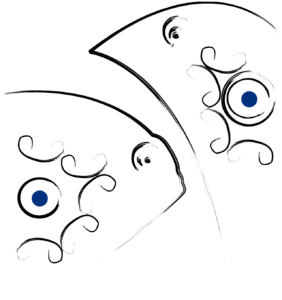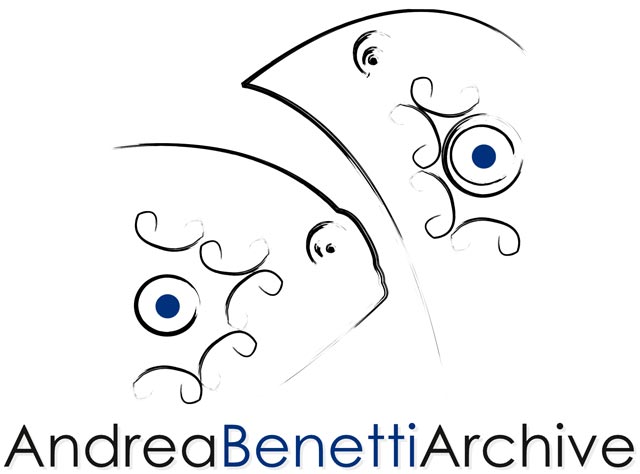Primal Abstraction · Returns, Harmonies, and Projections
How many substantial, minuscule, unimaginable things does our invention need in order to become once again that very reality from which it was drawn, how many threads to reconnect it within the immensely intricate weave of life, threads that we have severed to make it something unto itself.
Luigi Pirandello
Upon closer examination, we cannot help but agree with the call for “due respect for nature and for the human being” that Andrea Benetti elaborates on in the first lines—or nearly so—of his Manifesto of Neo-Cave Art, assigning art the duty/right to symbolically return “to its own origins,” since symbols possess “a force equal only to the force of nature itself; that very nature with which we must return to harmony, learning once again to respect and love it.” And we cannot, for a series of motivations that take shape and materialize in the reference to the name of Joseph Beuys and in full adherence to his thought. Be it due to the constant and profound personal connection-not at all coincidental-that on May 13, 1984, in Bolognano, allowed us to experience the joyful moment of the Encounter with Beuys, with the renowned discussion Defense of Nature and the planting of the First Italian Oak in memory of 7000 Oaks in Kassel, or due to the absolute agreement with that sort of statement/invitation/command from the German Master, which declares: “We have the duty to show the world what we have been capable of doing in and with our life.”
It is within this context that, in our view, Primal Abstraction is situated-this new encounter with the works of Andrea Benetti, engaged in dialogue with the spaces of the Castle of Charles V in Lecce-acknowledging these works as places of participation and contemporaneity. They move from that initial gesture on the rocks of the cueva de Altamira and/or the Grotta del Cervo in Badisco, allowing memory to become the present and a project for every possible future. What in the opposing values of iconic/aniconic-always present throughout art history and already contemporaneous in cave painting-finds, in the paintings (but are they still and only paintings?) of the Bolognese artist, aesthetic dimension, expressive signification, and ethical confirmation, thanks to what we might define as the relationships between plane, time, and space. First and foremost, the technique, which harks back to memorized and memorizable modus operandi aimed at constructing homogeneous and essential narrative surfaces; then, the moment, as an approach to memory but also as a rhythmic unit that explains its dialogue-in other places and at other times-with music, between timbres and frequencies; and finally, the very surface of the work, to be read as an interval, a beat, a period of a complex expressive capacity elevated to a legitimized method.
Thus, we come to recognize in these works-almost as if they were new landscapes of the everyday-figures and forms that play on allusion and references, sometimes flattened and imprinted, at other times to be understood as images and symbols, if not actual icons. Five- and six-pointed stars, little men, animals, everyday objects, rectangles, crescents, zigzags, triangles, puffs, female silhouettes, arabesques, stylistic motifs, sails, octagons, hearts, circles, squares… juxtaposed and superimposed in a chromatic accumulation (so many colors!) that seems to deny order and sequence, and yet, despite the variability of arrangement and combinations, conveys a sort of genetic map in the making, and thus mutable.
It is as if the artist has invented a kind of personal alphabet composed of shapes and models (allusive and illusory), extra-dimensional with sharp outlines and flat chromatic application, often activating personal and collective memories, distant cultures, shouted dialogues and noisy silences, allowing the figure/form/object to become the entropic center of a communication no longer monolingual but synesthetic, with other patterns and other processes. As such, it is a form of multiple perceptual and cognitive modality, among signs and sounds, between gesture and invention. The images, as if crystallized, reveal a plastic tension that seems to increase even as it draws from urban culture, rich in immediate and mutable recognizability, urging us towards an amalgamative process which, by assembling memories and daily life through methods at once simple and complex, gives rise to new languages and new styles. Until it reaches a narrative, which-between the accidental and the intentional-seems to close the circle, recognizing in meaning the contemporaneity of objectification, representation, and referentiality. In that entering the public dimension and that stepping out into the open, reminiscent of Beuys’ legacy.
Toti Carpentieri |
Art critic and historian |




